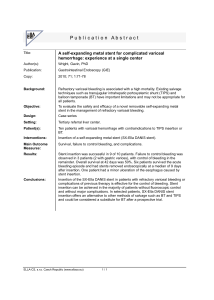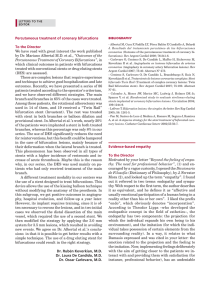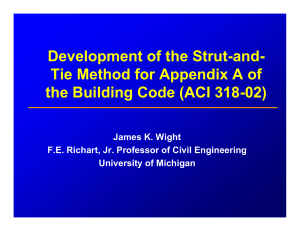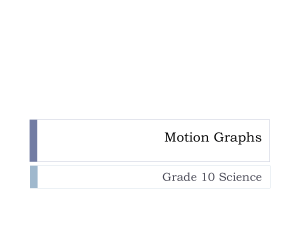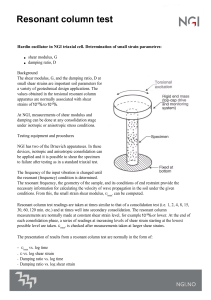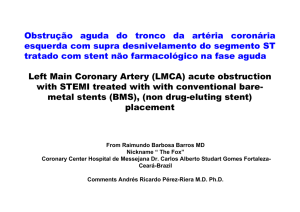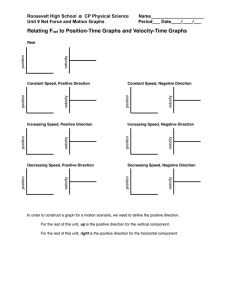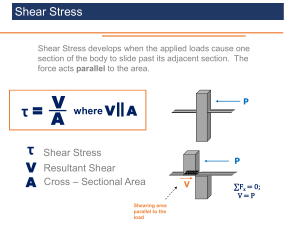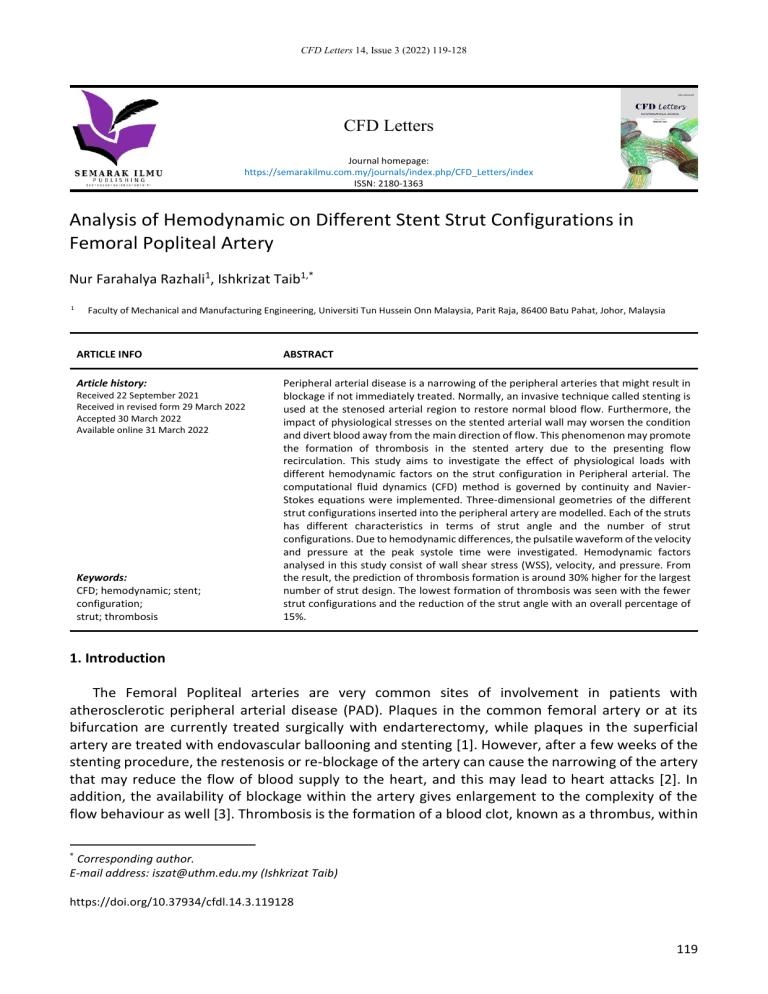
CFD Letters 14, Issue 3 (2022) 119-128
CFD Letters
Journal homepage:
https://semarakilmu.com.my/journals/index.php/CFD_Letters/index
ISSN: 2180-1363
Analysis of Hemodynamic on Different Stent Strut Configurations in
Femoral Popliteal Artery
Nur Farahalya Razhali1, Ishkrizat Taib1,*
1
Faculty of Mechanical and Manufacturing Engineering, Universiti Tun Hussein Onn Malaysia, Parit Raja, 86400 Batu Pahat, Johor, Malaysia
ARTICLE INFO
ABSTRACT
Article history:
Peripheral arterial disease is a narrowing of the peripheral arteries that might result in
blockage if not immediately treated. Normally, an invasive technique called stenting is
used at the stenosed arterial region to restore normal blood flow. Furthermore, the
impact of physiological stresses on the stented arterial wall may worsen the condition
and divert blood away from the main direction of flow. This phenomenon may promote
the formation of thrombosis in the stented artery due to the presenting flow
recirculation. This study aims to investigate the effect of physiological loads with
different hemodynamic factors on the strut configuration in Peripheral arterial. The
computational fluid dynamics (CFD) method is governed by continuity and NavierStokes equations were implemented. Three-dimensional geometries of the different
strut configurations inserted into the peripheral artery are modelled. Each of the struts
has different characteristics in terms of strut angle and the number of strut
configurations. Due to hemodynamic differences, the pulsatile waveform of the velocity
and pressure at the peak systole time were investigated. Hemodynamic factors
analysed in this study consist of wall shear stress (WSS), velocity, and pressure. From
the result, the prediction of thrombosis formation is around 30% higher for the largest
number of strut design. The lowest formation of thrombosis was seen with the fewer
strut configurations and the reduction of the strut angle with an overall percentage of
15%.
Received 22 September 2021
Received in revised form 29 March 2022
Accepted 30 March 2022
Available online 31 March 2022
Keywords:
CFD; hemodynamic; stent;
configuration;
strut; thrombosis
1. Introduction
The Femoral Popliteal arteries are very common sites of involvement in patients with
atherosclerotic peripheral arterial disease (PAD). Plaques in the common femoral artery or at its
bifurcation are currently treated surgically with endarterectomy, while plaques in the superficial
artery are treated with endovascular ballooning and stenting [1]. However, after a few weeks of the
stenting procedure, the restenosis or re-blockage of the artery can cause the narrowing of the artery
that may reduce the flow of blood supply to the heart, and this may lead to heart attacks [2]. In
addition, the availability of blockage within the artery gives enlargement to the complexity of the
flow behaviour as well [3]. Thrombosis is the formation of a blood clot, known as a thrombus, within
*
Corresponding author.
E-mail address: [email protected] (Ishkrizat Taib)
https://doi.org/10.37934/cfdl.14.3.119128
119
CFD Letters
Volume 14, Issue 3 (2022) 119-128
a blood vessel. The experts predicted that the stent strut geometry had a major contribution to the
restenosis process. Even though stent strut geometry plays such a key role in the restenosis process,
it has a relationship with the WSS distribution near the stent strut geometry. High shear stress and
blood velocity may create a hemodynamic condition conducive to degenerative vascular injury. This
result also suggests the necessity of evaluating flow characteristic and WSS-related indices in addition
to the capacity of the device to reduce the flow, the WSS, and the pressure [4]. Based on previous
study, lower amount of wall shear stress is found near the inner wall of the artery distal to the plaque
region (stenosis), and in both percentages of stenosis, the maximum wall shear stress will accrue in
the middle of the stenosis; however, it is much more in the higher rate of stenosis [5]. Besides,
hemodynamic variables of velocity and WSS are correlated with intimal thickness, thus proving that
atherosclerotic plaques tend to occur in areas of WSSlow. Thus, the flow characteristics in the Femoral
Popliteal artery require study in order to identify the performance of the strut configuration.
The changes in the flow characteristics due to stent implantation in peripheral arteries have been
the subject of numerical investigations through computational fluid dynamics (CFD) analyses. The
restenosis development of Femoral popliteal artery implanted with different geometrical stent strut
configurations can be invasively analysed and predicted with the current numerical simulation
technology via the computational fluid dynamic (CFD) method [6]. On the other hand, computational
fluid dynamics (CFD) was to quantify blood flow and determine the hemodynamic factors
contributing to the disease from a simplified model [7]. The computational analysis of the stent
performance in Femoral popliteal artery via the CFD method was based on hemodynamic parameter
distribution that consists of pressure, velocity, and wall shear stress. The model was developed using
computer-aided design (CAD) commercial software SOLIDWORKS, which was simulated using CFD
commercial software that is ANSYS FLUENT. Physiological loads that act on Femoral popliteal artery,
in combination with stenting, can lead to uncharacteristic deformations of the stented vessel. It is
imperative to study the different stent strut configurations in Femoral popliteal artery because they
are related to the flow characteristics that lead to the arterial disease. However, the flow phenomena
in this particular region is not well understood since it involves mechanical load, bending load, and
pulsatile load. Thus, this paper is to analyse the hemodynamic effects of different stent strut
configurations and predict the growth of thrombosis.
2. Methodology
2.1 Simplified Geometry Model of Stented Femoral Popliteal Artery
The simplified geometry of the stented Femoral Popliteal artery was modelled. This arterial model
has a different stent strut configuration. The Type I stent was based on the commercial stent
for Femoral Popliteal artery of Absolute Pro. Type II and Type III stents, on the other hand, were
modified struts from the Type I stent. Whereas the Type III stent was similar to the Type I but had an
additional strut. The differences between Type I and Type II were in terms of strut angle. The strut
angle for Type II was greater than that for Type I, which was comparable, as shown in Figure 1.
Previous researchers reported that the strut angle has a relationship to the direction of blood flow
associated with increases in the area of the vessel exposed to WSSlow and high WSSG [8].
Furthermore, Ladisa et al., mentioned that the strut angle has an effect on cellular adhesion in vitro
[9]. The variation of strut angle was made in order to analyse the hemodynamic effects of different
single strut configurations. In the present study, blood flow was assumed to be Newtonian blood.
This is due to the shear rates being greater than 50𝑠 −1 thus validating the widely held Newtonian
assumption in large arteries as reported by Long et al., [10].
120
CFD Letters
Volume 14, Issue 3 (2022) 119-128
40o
(a)
60o
(b)
(c )
Fig. 1. Simplified model of stented of femoral
popliteal artery (a) Type I (b) Type II (c) Type III
2.2 Meshing of Stented Femoral Popliteal Artery Model
A computational domain of a simplified Femoral Poplitel artery model implanted with three types
of stents is drawn by using CAD software SOLIDWORKS 2018 (Dassault Systemes Solidworks
Corporation, Waltham, MA) and then exported to ANSYS. The computational domain is generated
into a tetrahedral mesh as shown in Figure 2. It is necessary for the solution to maintain accuracy and
stability in order to get a good quality mesh. There are four processes to generate the mesh, which
start with specifying the global mesh setting, inserting a local mesh setting, generating the mesh, and
checking mesh quality. The grid independent test (GIT) was required to select the mesh size [11].
Fig. 2. Tetrahedral mesh of the computational domain
2.3 Parameter Assumptions
It has an average density of approximately 1060 kg/m3 and a dynamic viscosity of 0.0035 kg/ms
[12]. The blood vessel is assumed to be rigid and there is no slip condition between stents and blood
vessels [13]. Figure 2 also depicts the inlet and outlet boundary conditions. In the investigation of the
hemodynamic effect on different strut cross-sectional areas, steady flow is taken into account. The
121
CFD Letters
Volume 14, Issue 3 (2022) 119-128
velocity inlet and pressure outlet are assigned based on the cardiac phase of maximum systolic time.
In this simulation, the velocity input and pressure outlet are set to 0.50 m/s and 21731 Pa,
respectively [14].
2.4 Computational Model and Governing Equation
The Navier-Stokes equation and continuity equation are solved by the computing velocity inlet
and pressure outlet. Under the assumptions of incompressibility, homogeneity and Newtonian blood,
the equations are defined as illustrated these equation [15].
𝜕𝑢
𝜌 𝜕𝑡 + 𝜌(𝑢. 𝛻)𝑢 = − 𝛻𝑃 + 𝜇∇2 𝑢
∇. 𝑢 = 0
(1)
(2)
Where u is the primary vector u= [u, v, w], and P is the pressure that vary in space x, y, z and time, t.
Wall shear stress estimation is common analysis in predicting performance of medical devices
towards vascular wall. Wall shear stress (WSS) can be defined as shown in Eq. (3).
𝜕𝑣
𝑊𝑆𝑆𝜏 = 𝜕𝑟
(3)
Where u is the fluid viscosity, v is the velocity along the vessel axis, and r is the perpendicular to and
away from the wall.
3. Result
3.1 Grid Independence Test
Grid independence is a term used to describe the improvement of results by using successively
smaller cell sizes for calculations. Figure 3 shows the result of the velocity profile for stented femoral
popliteal artery models with different numbers of nodes, which are 380K, 191K, and 88K. The
selection of a node is based on an unchanging result of the parameters with respect to the increasing
number of nodes. Thus, the selection of the sample is based on the nodes. However, the higher the
number of nodes, the higher the time consumed. Therefore, the sufficient number of nodes obtained
using the present study mesh setting was 191K nodes
Fig. 3. Velocity distributions at the centre of femoral popliteal
artery for different number of nodes
122
CFD Letters
Volume 14, Issue 3 (2022) 119-128
3.2 Verification
In order to extract the data, it is necessary to consider the same region for both the current and
previous studies in order to make a comparison. The comparison of simulation results was analysed
based on the previous study conducted by Ali A. Al-Allaq [16]. This finding was used as a reference
for verifying the present study by calculating the relative error [17]. From the calculation, the relative
error is approximately 7.8% and is acceptable due to the fact that the pattern of the result is quite
similar as illustrated in Figure 4.
Fig. 4. Distribution of velocity between previous study and present study
3.3 Distributions of Velocity and Pressure at the Femoral Popliteal Artery
Despite the use of stents to improve blood flow, the physiological process can produce restenosis,
a phenomenon that causes tissue growth, again closing the vessels. The hemodynamic parameters,
such as velocity distribution and pressure distribution, were susceptible to re-stenosis [18]. Currently,
direct calculation of flow velocity and pressure at the luminal surface is not possible in vivo. However,
technological and scientific advances in mathematical and numerical models allow the mathematical
simulation of blood flow and the precise determination of local hemodynamic effects [19]. High
pressure may occur in the blood vessel, causing damage such as arteriolar medial hyperthrophy,
intimal proliferation and fibrosis, and eventual obliteration of pulmonary arterioles and capillaries,
thus increasing pulmonary resistance [20, 21]. In addition, blood damage can occur when there are
large pressure drops in the artery. This is due to the high shear rate and outflow velocity from the
inlet of the artery.
Based on Figure 5, the velocity distributions for different stent strut configurations are shown.
The velocity has slightly reduced from the proximal to the distal region, which represents the vortices
after the flow passes through the strut. The results also show that the highest velocity was observed
at the distal region of the Type III stent as compared to Type II and Type I. Instead of velocity, pressure
is an alternative parameter used to predict arterial stenosis. The contour of pressure for different
stent strut configurations in Figure 6 indicates the pressure distribution for each type of stent.
Overall, there was an increment of pressure from the proximal region to the distal region. Type III
shows the highest reading value of pressure at the distal region. Compared with Figure 5 and Figure
6, the velocity decreases and the pressure increases after the blood flows through the stent. The
velocity of blood flow increased due to the formation of plaques that narrowed the lumen size. The
123
CFD Letters
Volume 14, Issue 3 (2022) 119-128
lesion will cause atherosclerosis, and over time, the plaque will grow to be massive, producing a mass
of plaques and rupturing the artery [22]. The thrombogenic process is accelerated due to the effect
of misalignment of blood flow direction near the stent strut that causes tiny injuries to the arterial
wall. The hemodynamic parameters generate the formation of plaques that will stop the circulation
of blood and cause backflow in severe cases [23].
Type
I
Type
II
Type
III
Fig. 5. The velocity distribution for different stent strut
configuration
Type I
Type II
Type III
Fig 6. The pressure distribution for different stent strut configuration
124
CFD Letters
Volume 14, Issue 3 (2022) 119-128
3.4 Distributions of Wall Shear Stress at Strut Configurations
The vascular endothelium is exposed to a hemodynamic stress generated by the blood flow
known as the wall shear stress. Wall shear stress is defined as the force per unit area exerted on the
vessel wall by the blood flow, and it depends on blood viscosity and the blood flow velocity profile.
The presence of local hemodynamic factors such as wall shear stress plays a major role in the
generation, progression, and destabilization of atherosclerotic plaques. The wall shear stress
increases as the atherosclerotic plaque progresses to create stenosis, particularly in the proximal part
of the plaque at the stenotic region's entrance. It has been suggested that this increase in the wall
shear stress could give rise to a reduction in the fibrous cap of the plaque through a process of
apoptosis and, therefore, would favour destabilization and rupture of vulnerable plaques [24]. Local
hemodynamic factors influence the evolution of atherosclerotic disease and may contribute to
explaining the differences in distribution and progression of different atherosclerotic plaques. The
presence of low wall shear stress promotes plaque progression, whereas physiologic shear stress
protects the vascular endothelium. These local hemodynamic parameters, and in particular, an
increase in the wall shear stress, have been suggested to play a role in the generation and
destabilization of vulnerable plaques [25].
Figure 7 shows the distribution of wall shear stress for different stent strut configurations. From
the observations, there is the formation of vortices due to the flow recirculation, especially at the
distal region. This figure also shows the flow recirculation was slightly higher for the Type III stent as
compared to other stents. This is due to the diverging of flow directions after being attached to the
blunt shape of the strut configuration. However, the Type I stent shows the lowest activity of the
vortices presented at the distal region. This phenomenon occurred because the diverging flow was
aligned with the direction of the flow after passing through the strut configuration. Thus, the Type I
stent shows the desired stent configuration due to the flow characteristics, which might reduce the
formation of the thrombosis. A high re-circulation of the blood flow could increase the possibility of
thrombosis being formed. Regions with flow recirculation may appear, causing the biological
molecules to accumulate considering the change in near-wall flow behaviour and wall shear stress
distribution. The commonly studied hemodynamic characteristic in the cardiovascular system is the
parameter of wall shear stress (WSS), which is able to predict both the restenosis phenomenon of
atherosclerotic and thrombotic patients [26]. A higher value of WSS than 70 dyne/𝑐𝑚2 indicates a
high shear thrombosis of the arterial wall, while WSS between -4 and 4 dyne/𝑐𝑚2 shows a region
prone to atherosclerosis formation [27]. From the calculation, the total wall surface area in a range
greater than 70 dyne/𝑐𝑚2 which was approximately 30% for Type III, 23% for Type II, and 15% for
Type I, respectively.
125
CFD Letters
Volume 14, Issue 3 (2022) 119-128
Type I
Type II
Type III
Fig. 7. Contour of wall shear stress for different stent strut configuration
4. Conclusion
In conclusion, the blood movement should be aligned with the direction of flow in order to reduce
the chaos, especially at the distal region. The formation of the thrombosis was seen to be highest
near the strut configuration at the distal region of FPA. However, the highest void area in the stented
region reduced approximately 15% of the thrombosis growth. Thus, the fewer linkages of the strut
and the reduction of strut angle manage to reduce the risk of thrombosis growth.
Acknowledgement
This research was funded by a grant from Universiti Tun Hussein Onn Malaysia (GPPS Grant H675).
Reference
[1]
[2]
[3]
[4]
[5]
Velde, Lennart. "Computational Fluid Dynamics: a clinician's tool for Femoral Artery Stenosis?." Master's thesis,
University of Twente, 2018.
Jamali, Muhammad Sabaruddin Ahmad, Zuhaila Ismail, and Norsarahaida Saidina Amin. "Effect of Different Types
of Stenosis on Generalized Power Law Model of Blood Flow in a Bifurcated Artery." Journal of Advanced Research
in Fluid Mechanics and Thermal Sciences 87, no. 3 (2021): 172-183. https://doi.org/10.37934/arfmts.87.3.172183
Al-Azawy, Mohammed Ghalib, Saleem Khalefa Kadhim, and Azzam Sabah Hameed. "Newtonian and NonNewtonian Blood Rheology Inside a Model of Stenosis." CFD Letters 12, no. 11 (2020): 27-36.
https://doi.org/10.37934/cfdl.12.11.2736
Biglarian, Mohit, Morsal Momeni Larimi, Hamid Hassanzadeh Afrouzi, Abouzar Moshfegh, Davood Toghraie,
Ashkan Javadzadegan, and Sara Rostami. "Computational investigation of stenosis in curvature of coronary artery
within both dynamic and static models." Computer methods and programs in biomedicine 185 (2020): 105170.
https://doi.org/10.1016/j.cmpb.2019.105170
Catalán-Echeverría, Borja, Michael E. Kelly, Lissa Peeling, Donald Bergstrom, Xiongbiao Chen, and Mauro Malvè.
"CFD-based comparison study of a new flow diverting stent and commercially-available ones for the treatment of
cerebral aneurysms." Applied Sciences 9, no. 7 (2019): 1341. https://doi.org/10.3390/app9071341
126
CFD Letters
Volume 14, Issue 3 (2022) 119-128
[6]
[7]
[8]
[9]
[10]
[11]
[12]
[13]
[14]
[15]
[16]
[17]
[18]
[19]
Paisal, Muhammad Sufyan Amir, Syed Fadhil Syed Adnan, Ishkrizat Taib, Mohammad Kamil Abdullah, Normayati
Nordin, Suzairin Md Seri, and Nofrizalidris Darlis. "Flow Characteristics Near to Stent Strut Configurations on
Femoropopliteal Artery." In IOP Conference Series: Materials Science and Engineering, vol. 226, no. 1, p. 012147.
IOP Publishing, 2017. https://doi.org/10.1088/1757-899X/226/1/012147
Lim, Sheh Hong, Mohd Azrul Hisham Mohd Adib, Mohd Shafie Abdullah, Nur Hartini Mohd Taib, Radhiana Hassan,
and Azian Abd Aziz. "Study of Extracted Geometry Effect on Patient-Specific Cerebral Aneurysm Model with
Different
Threshold
Coefficient
(Cthres)." CFD
Letters 12,
no.
10
(2020):
1-14.
https://doi.org/10.37934/cfdl.12.10.114
Himburg, Heather A., Deborah M. Grzybowski, Andrew L. Hazel, Jeffrey A. LaMack, Xue-Mei Li, and Morton H.
Friedman. "Spatial comparison between wall shear stress measures and porcine arterial endothelial
permeability." American Journal of Physiology-Heart and Circulatory Physiology 286, no. 5 (2004): H1916-H1922.
https://doi.org/10.1152/ajpheart.00897.2003
LaDisa, John F., Lars E. Olson, Douglas A. Hettrick, David C. Warltier, Judy R. Kersten, and Paul S. Pagel. "Axial stent
strut angle influences wall shear stress after stent implantation: analysis using 3D computational fluid dynamics
models
of
stent
foreshortening." Biomedical
engineering
online 4,
no.
1
(2005):
1-10.
https://doi.org/10.1186/1475-925X-4-59
Johnston, Barbara M., Peter R. Johnston, Stuart Corney, and David Kilpatrick. "Non-Newtonian blood flow in human
right coronary arteries: steady state simulations." Journal of biomechanics 37, no. 5 (2004): 709-720.
https://doi.org/10.1016/j.jbiomech.2003.09.016
Abd Rahman, Muhammad Faqhrurrazi, Norzelawati Asmuin, Nurul Fitriah Nasir, Ishkrizat Taib, Mohamad Nur
Hidayat Mat, and Riyadhthusollehan Khairulfuaad. "Effect of Different Orifice Diameter on The Flow Characteristic
in Pressurized Metered Dose Inhaler by Using CFD." CFD Letters 12, no. 3 (2020): 39-49.
https://doi.org/10.37934/cfdl.12.3.3949
Chandra, Santanu, Nalini M. Rajamannan, and Philippe Sucosky. "Computational assessment of bicuspid aortic
valve wall-shear stress: implications for calcific aortic valve disease." Biomechanics and modeling in
mechanobiology 11, no. 7 (2012): 1085-1096. https://doi.org/10.1007/s10237-012-0375-x
Paisal, Muhammad Sufyan Amir, Syed Fadhil Syed Adnan, Ishkrizat Taib, Mohammad Kamil Abdullah, Normayati
Nordin, Suzairin Md Seri, and Nofrizalidris Darlis. "Flow Characteristics Near to Stent Strut Configurations on
Femoropopliteal Artery." In IOP Conference Series: Materials Science and Engineering, vol. 226, no. 1, p. 012147.
IOP Publishing, 2017. https://doi.org/10.1088/1757-899X/226/1/012147
Delis, Konstantinos T., Andrew N. Nicolaides, and Gerard Stansby. "Effect of posture on popliteal artery
hemodynamics." Archives of Surgery 135, no. 3 (2000): 265-269. https://doi.org/10.1001/archsurg.135.3.265
Seman, Che Mohammad Hafizal Muzammil Che, Nur Ayuni Marzuki, Nofrizalidris Darlis, Noraini Marsi, Zuliazura
Mohd Salleh, Izuan Amin Ishak, Ishkrizat Taib, and Safra Liyana Sukiman. "Comparison of Hemodynamic
Performances Between Commercial Available Stents Design on Stenosed Femoropopliteal Artery." CFD Letters 12,
no. 7 (2020): 17-25. https://doi.org/10.37934/cfdl.12.7.1725
Al-allaq, Ali Amer. "The Computational Fluid Dynamic Simulations for Gangrene Disease in Diabetic Foot." AlKhwarizmi Engineering Journal 13, no. 4 (2017): 111-123. https://doi.org/10.22153/kej.2017.05.003
Paisal, Muhammad Sufyan Amir, Ishkrizat Taib, Ahmad Mubarak Tajul Arifin, and Nofrizalidris Darlis. "An analysis
of blood pressure waveform using windkessel model for normotensive and hypertensive conditions in carotid
artery." Journal of Advanced Research in Fluid Mechanics and Thermal Sciences 57, no. 1 (2019): 69-85.
Paraskevas, Kosmas I., and Frank J. Veith. "Techniques and innovations to improve carotid artery stenting
outcomes." International Journal of Cardiology 222 (2016): 986-987. https://doi.org/10.1016/j.ijcard.2016.08.148
Schernthaner, R., A. Stadler, F. Lomoschitz, M. Weber, D. Fleischmann, J. Lammer, and Ch Loewe. "Multidetector
CT angiography in the assessment of peripheral arterial occlusive disease: accuracy in detecting the severity,
number, and length of stenoses." European radiology 18, no. 4 (2008): 665-671. https://doi.org/10.1007/s00330007-0822-8
127
CFD Letters
Volume 14, Issue 3 (2022) 119-128
[20] Krumenauer, F. Z., C. T. Matayoshi, I. B. da Silva, and G. F. Batalha. "Concurrent engineering and DFMA approaches
on the development of automotive panels and doors." Journal of Achievements in Materials and Manufacturing
Engineering 31, no. 2 (2008): 690-698.
[21] Basri, Adi Azriff, SM Abdul Khader, Cherian Johny, Raghuvir Pai, Mohammed Zuber, Zainuldin Ahmad, and Kamarul
Arifin Ahmad. "Effect of single and double stenosed on renal arteries of abdominal aorta: A computational fluid
dynamics." CFD Letters 12, no. 1 (2020): 87-97.
[22] Sciences, T. (2020). Effect of Hemodynamic Parameters on Physiological Blood Flow through Cardiovascular Disease
(CVD) – The Perspective Review. 1(1), 19–34.
[23] Cohen, Barbara J., and Ann DePetris. Medical terminology: An illustrated guide. Lippincott Williams & Wilkins, 2013.
[24] Mongrain, Rosaire, and Josep Rodés-Cabau. "Role of shear stress in atherosclerosis and restenosis after coronary
stent implantation." Revista espanola de cardiologia 59, no. 1 (2006): 1-4. https://doi.org/10.1016/s18855857(06)60040-6
[25] Slager, C. J., J. J. Wentzel, F. J. H. Gijsen, Attila Thury, A. C. Van der Wal, J. A. Schaar, and P. W. Serruys. "The role of
shear stress in the destabilization of vulnerable plaques and related therapeutic implications." Nature clinical
practice cardiovascular medicine 2, no. 9 (2005): 456-464. https://doi.org/10.1038/ncpcardio0298
[26] Zhang, Bo, Junyi Gu, Ming Qian, Lili Niu, and Dhanjoo Ghista. "Study of correlation between wall shear stress and
elasticity in atherosclerotic carotid arteries." Biomedical engineering online 17, no. 1 (2018): 1-11.
https://doi.org/10.1186/s12938-017-0431-y
[27] Suess, Taylor, Joseph Anderson, Laura Danielson, Katie Pohlson, Tyler Remund, Elizabeth Blears, Stephen Gent, and
Patrick Kelly. "Examination of near-wall hemodynamic parameters in the renal bridging stent of various stent graft
configurations for repairing visceral branched aortic aneurysms." Journal of vascular surgery 64, no. 3 (2016): 788796. https://doi.org/10.1016/j.jvs.2015.04.421
128

